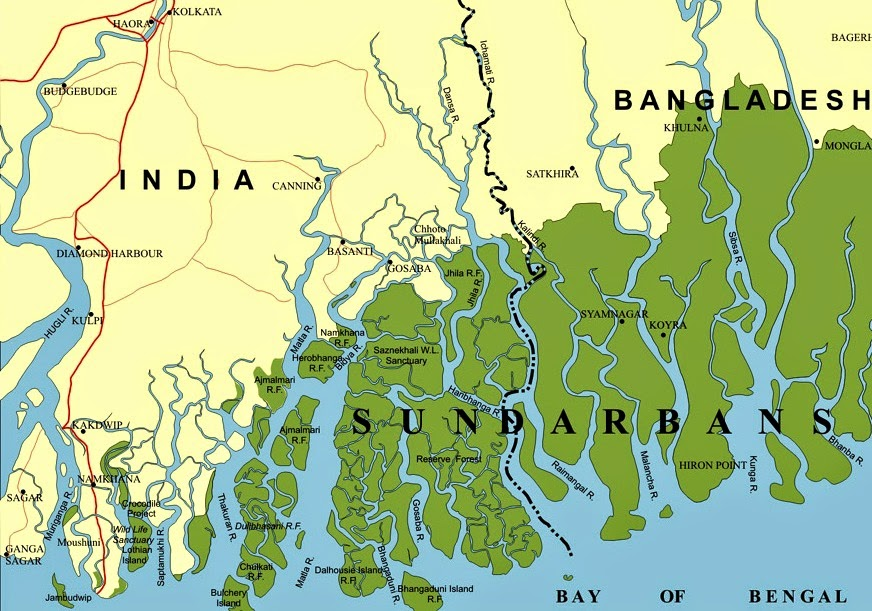Climate-Induced Migration and Modern Slavery | 23 Sep 2021
Why in News
Recently, International Institute for Environment and Development (IIED) and Anti-Slavery International released a report named Climate-Induced Migration and Modern Slavery.
- IIED is a policy and action research organisation promoting sustainable development and linking local priorities to global challenges. It is based in London, UK.
- Anti-Slavery International is the world’s oldest international human rights organisation, founded in 1839. It is the only British charity exclusively working to eliminate all forms of slavery.
Key Points
- Increasing Inequality:
- Climate change is devastating the planet, leading to intensifying global inequality as well as disputes over land, water and scarce resources.
- Increased Migration:
- People are being driven to migrate within and across borders in search of resources and income.
- As many as 55 million people were internally displaced within their countries due to extreme weather events in 2020.
- The World Bank estimates that, by 2050, the impact of the climate crisis, such as poor crop yields, a lack of water and rising sea levels, will force more than 216 million people across six regions, including sub-Saharan Africa, south Asia and Latin America, from their homes (Groundswell Report).
- People are being driven to migrate within and across borders in search of resources and income.
- Modern Slavery:
- Climate change-induced extreme weather events put women, children and minorities at risk of modern slavery and human trafficking. The phenomenon is on the rise in India, among other countries.
- 40.3 million people are living under slavery in the world.
- Drivers of vulnerability to modern slavery are complex and impacted by many layers of risk. While several socio-economic, political, cultural and institutional risks shape vulnerability, they are increasingly considered to be made worse by climate change impacts and environmental degradation.
- Climate change-induced extreme weather events put women, children and minorities at risk of modern slavery and human trafficking. The phenomenon is on the rise in India, among other countries.
- Plight of Sundarban:
- The Sundarban region is characterised by intense, recurrent and sudden onset disasters, therefore millions of people across the Sundarbans are unable to work for most of the year.

- Severe cyclones and flooding in Sundarbans delta had also reduced the land for agriculture, which is the major source of livelihood.
- While restrictions were imposed by bordering countries, smugglers and traffickers operating in the affected region targeted widows and men desperate to cross the border to India to find employment.
- Women were trafficked and often forced into hard labour and prostitution, with some working in sweatshops along the border.
- People displaced and migrating from rural to urban areas with no resources, skills or social networks at their destination, are targeted by agents and / or traffickers.
- The Sundarban region is characterised by intense, recurrent and sudden onset disasters, therefore millions of people across the Sundarbans are unable to work for most of the year.
- Suggestions:
- Recognise the Impact of Climate Change:
- Climate and development policy-makers urgently need to recognise that millions of people displaced by climate change are being, and will be, exposed to slavery in the coming decades.
- Develop Targeted Actions:
- Policymakers should therefore develop targeted actions, at national and international levels, to address the issue. The global and regional discourse on development and climate policy must consider trafficking and slavery risks due to climate shocks.
- Committed Funding:
- G 20 should commit to providing long-term funding to address anti-slavery efforts in the context of recurring displacement due to climate impacts.
- Coordination of Ongoing Initiatives:
- Several ongoing initiatives — including the Warsaw International Mechanism Task Force on Displacement (WIM TFD), the Sendai Framework, etc — should be coordinated to increase understanding of, and response to, growing risks of climate-induced migration / displacement and exposure to modern slavery.
- Effort to Tackle Modern Slavery:
- The report is a warning to world leaders in advance of the Conference of Parties (CoP 26) United Nations climate summit in Glasgow in November 2021.
- It calls on them to make sure efforts to address the climate emergency also tackle modern slavery.
- Recognise the Impact of Climate Change:
Forms of Modern Slavery
- Human Trafficking: The use of violence, threats or coercion to transport, recruit or harbour people in order to exploit them for purposes such as forced prostitution, labour, criminality, marriage or organ removal.
- Forced Labour: Any work or services people are forced to do against their will under threat of punishment.
- Debt Bondage/Bonded Labour: The world’s most widespread form of slavery. People trapped in poverty borrow money and are forced to work to pay off the debt, losing control over both their employment conditions and the debt.
- Descent–Based Slavery: Most traditional form, where people are treated as property, and their “slave” status was passed down the maternal line.
- Slavery of Children: When a child is exploited for someone else’s gain. This can include child trafficking, child soldiers, child marriage and child domestic slavery.
- Forced and Early Marriage: When someone is married against their will and cannot leave. Most child marriages can be considered slavery.
